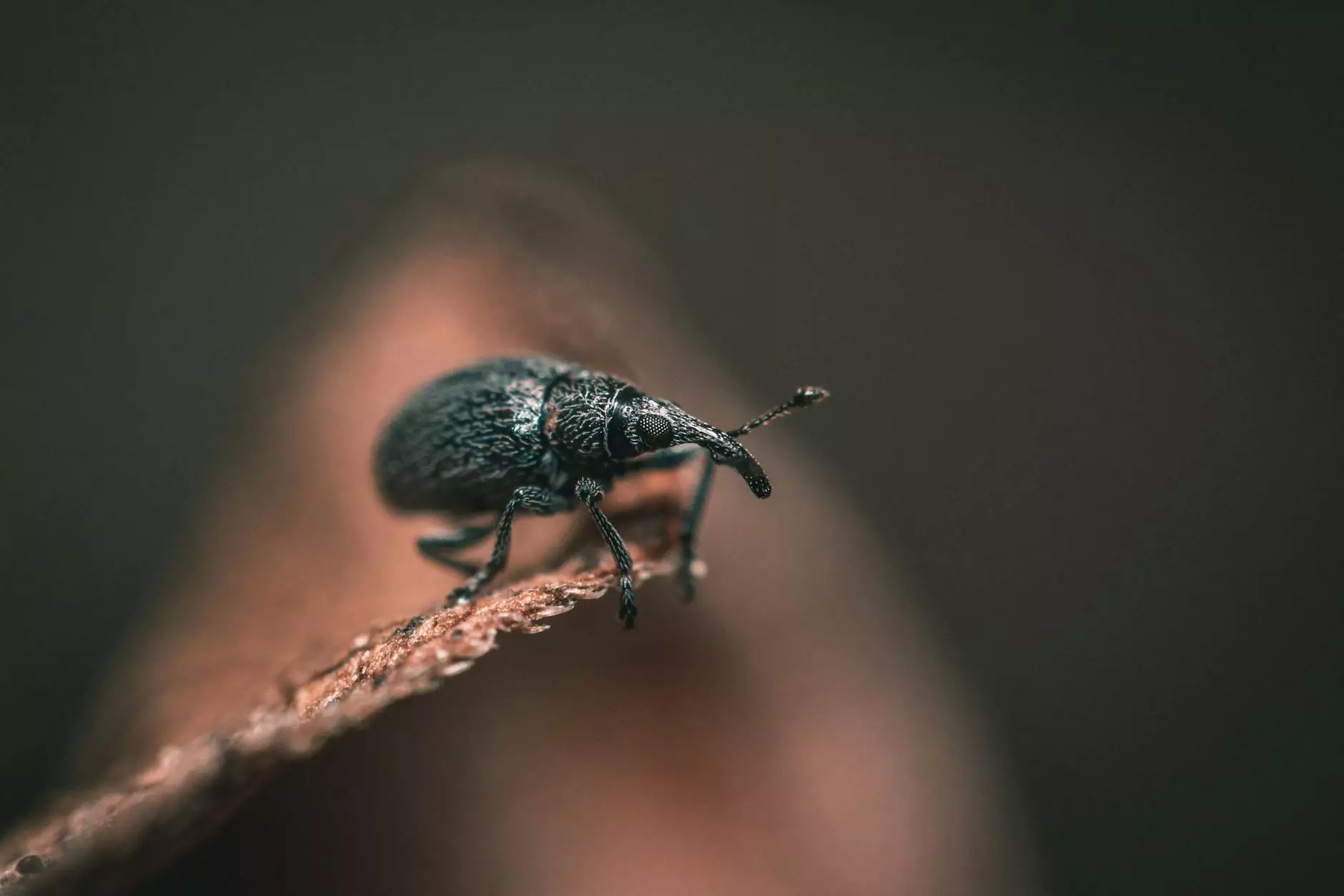Effective Grain Weevil Control: Safeguarding Your Farm

When it comes to maintaining a productive and profitable farm, effective grain weevil control is a critical concern for agricultural professionals. Grain weevils, particularly the Rice Weevil (*Sitophilus oryzae*), and Lesser Grain Weevil (*Sitophilus granarius*), pose significant threats to stored grains and products. Implementing robust control measures not only protects your harvest but also ensures the longevity of your farming equipment by preventing infestations. This article delves into comprehensive strategies and techniques for successful grain weevil control.
Understanding Grain Weevils: Biology and Behavior
Before implementing control measures, it is essential to understand the biology and behavior of grain weevils:
- Lifecycle: Grain weevils undergo a complete metamorphosis, including the egg, larva, pupa, and adult stages. The female weevil lays eggs inside grains, ensuring that the larvae have a food source upon hatching.
- Feeding Habits: Adult weevils bore holes into grains to feed on the interior, which compromises the integrity of the stored product.
- Environmental Preferences: Grain weevils thrive in warm, humid conditions, making grain storage facilities particularly susceptible to infestations.
Identifying Signs of Infestation
Awareness of the signs of grain weevil infestation is key to timely control:
- Visible Damage: Look for small holes in grains and packaging. Damage is often noticeable in grain bags.
- Frass: The presence of waste material (frass) around grain storage indicates an active weevil population.
- Live or Dead Weevils: Spotting adult weevils inside storage areas or on grains is a clear indication of an infestation.
Comprehensive Strategies for Grain Weevil Control
1. Prevention: The First Line of Defense
Prevention is the most effective control strategy for grain weevils. Here are key practices to consider:
- Regular Cleaning: Clean storage facilities and machinery thoroughly to remove all grain residues where weevils could breed.
- Proper Storage: Use airtight containers for storing grains to limit weevil access. Consider vacuum-sealed packaging for long-term storage.
- Monitoring Conditions: Maintain low humidity and cool temperatures in storage areas, as weevils thrive in warm, humid environments.
2. Continuous Monitoring
Utilize monitoring traps to keep track of weevil populations. These traps can help detect infestations before they escalate and can be essential for maintaining a pest-free environment.
3. Chemical Control Methods
If an infestation occurs, several chemical control methods can be applied:
- Insecticides: Use residual insecticides approved for grain storage. Ensure proper application according to the manufacturer's instructions to avoid harm to crops and equipment.
- Fumigation: Employ fumigation techniques to eliminate weevils in large bulk storage facilities. This should be conducted by certified professionals due to the complexity and risks involved.
4. Non-Chemical Control Methods
Consider non-chemical methods that can be equally effective:
- Heat Treatment: Exposing stored grains to high temperatures (at least 120°F for several hours) can kill weevil stages effectively. This method is environmentally friendly and safe for crops.
- Cold Treatment: For smaller quantities of grains, refrigeration can kill weevils, provided that the grains are kept at temperatures below 0°F for a minimum of four days.
- Biological Control: Explore the use of natural predators or pathogens that can suppress weevil populations without chemical applications.
The Importance of Farm Equipment in Pest Management
Farm equipment repair and maintenance play a crucial role in pest management. Properly functioning equipment minimizes disruptions during grain management activities, making it easier to monitor and control weevil populations.
1. Ensuring Equipment Efficiency
Regular maintenance ensures that your farming equipment remains in optimal condition. Here are practices to follow:
- Scheduled Inspections: Conduct regular checks on your storage facilities, grain handling equipment, and any machinery involved in harvesting and handling grains.
- Repair and Upgrade: Replace worn-out parts and consider upgrading to more efficient models that facilitate cleaner operations.
2. Integrating Technology in Pest Management
Today, technology can enhance pest management strategies:
- Monitoring Software: Implement software that tracks environmental conditions in storage, alerting you to any shifts that may increase the risk of infestation.
- Online Resources: Utilize online databases and resources such as tsgcinc.com for updates on pest control techniques and innovations in farm equipment.
Conclusion
Successful grain weevil control is a multifaceted process that requires proactive measures, regular monitoring, and a combination of chemical and non-chemical strategies. By prioritizing prevention and maintaining your farm equipment, you can effectively protect your harvest from these damaging pests. Stay informed by accessing resources available at tsgcinc.com, ensuring that your practices evolve alongside advancements in pest control techniques. Remember, a pest-free farm is not just about securing your crops; it's about ensuring the sustainability and productivity of your entire agricultural operation.









